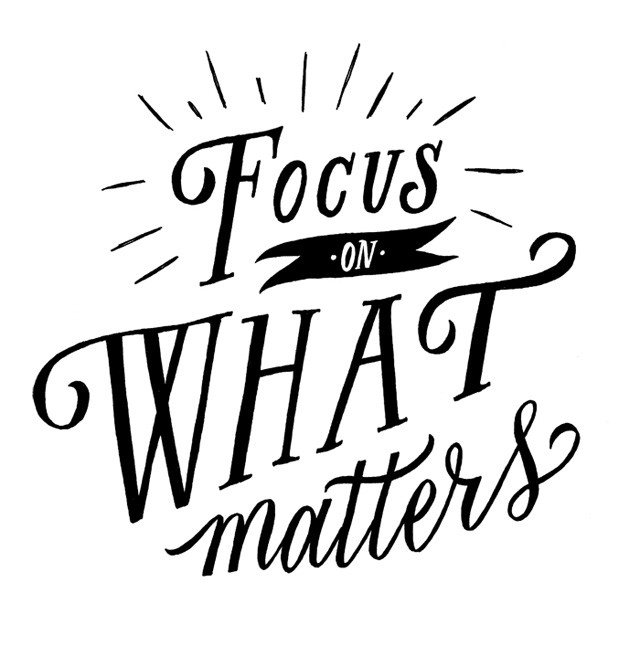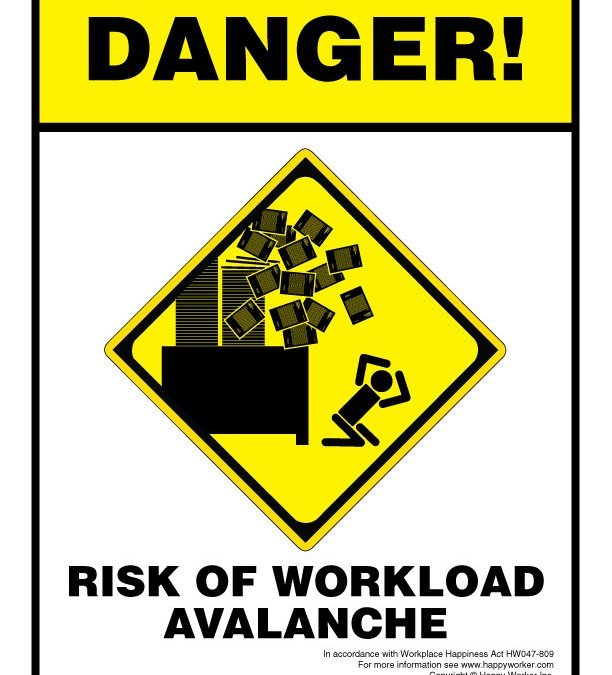
by Julia Felton | May 14, 2014
 Running your own business involves a millions of details and moving parts. And if you’re relying on yourself to remember all of these, you WILL get burned out. Things WILL fall through the cracks and ultimately you will lose the trust of your customers. Not a great place to end up in an environment where prospects and customers are seeking you to be their trusted advisor.
Running your own business involves a millions of details and moving parts. And if you’re relying on yourself to remember all of these, you WILL get burned out. Things WILL fall through the cracks and ultimately you will lose the trust of your customers. Not a great place to end up in an environment where prospects and customers are seeking you to be their trusted advisor.
This is why the creation of systems is vital for you if you are to create a Joined Up Business so you can become focused and productivity by saving yourself resources. You see systems are the lifeblood of your business – they are an integral part of the business DNA and yet many business take an ostrich approach to systems – preferring to stick their head in the sand rather than take action and get some simple systems set up,
A system is simply a series of steps for a particular task or project. The cool part? You shouldn’t be the one executing the system. Once you have systems documented, you can hand them off to key team members – this is how you begin to create a business that runs without you.
If you’ve never systematized anything in your business before, take heart – if you take the same steps to achieve particular tasks in your business more than once, you already have the makings of a system for that task.
The key is to hone, refine and ultimately delegate the RIGHT systems that are going to grow your business.
Which systems should you implement FIRST? Below are my top 7 systems that I use daily to run my business.
1. A system to attract new clients.
Your business growth depends on your ability to attract new, highly qualified, highly awesome ideal peeps into your world, month in and month out. (The easiest way to get started? A signature system, a signature talk, and local speaking gigs. Simple, streamlined and proven.)
2. A system to turn prospects into invested clients.
What happens when a potential new client contacts you or your team out of the blue? When you invest time, energy and attention to attract new clients, it only makes sense to have a system that kicks in to turn these prospects into invested new clients.
3. A system to follow up with prospects (after events, networking, or in-person meetings).
Nothing closes the “know-like-trust” gap faster than face-to-face connection, which means that every event you attend can mean thousands of dollars in business for you – if you follow up. Next time you find a stack of business cards in your purse, ask yourself, “How can I systematize follow-up within 48 hours of the event?”
4. A system for “keep in touch” (such as a newsletter).
There is no way that you can expect to fill your programs easily if you’re not doing SOME kind of outreach or follow-up. Whether it’s a newsletter, a video newsletter, an evergreen autoresponder, or a blog (used in conjunction with email), you’ve got to do something and do it consistently. Which means… you need a system. 🙂
5. A system to serve clients in your programs.
When a new client signs up, there’s excitement… and terror. She’s thinking a zillion things, not the least of which is, “Did I really make the right move, invetsing £5000 to this person?” Every program you offer needs to have a system behind it to give your clients a stellar experience: welcoming new clients, scheduling the calls, delivering the calls, recording calls, distributing the calls, communicating with your herd and whatever else you do to deliver the goods. Your clients DO notice these details, which, when done well, leads to better results and repeat business.
6. A system to manage your cash.
Your cash flow system should include “buckets” for incoming money (X for taxes, Y for expenses, Z for your salary, and so on). And always pay yourself, even if it’s just one dollar – the action matters more than the amount when you’re just getting started.
7. A system to generate referrals & testimonials.
The best clients come from your awesome current clients. Awesome current clients love to refer, so make it easy on them. (Which makes your business growth easy on you – win!)
The small amount of time you’ll invest in setting up your systems will pay you back exponentially in time and income over the long run, PLUS give all of your clients and potential clients the kind of high-value experience that truly sets you apart.
You can learn more about the 21 Ways I see most business owners losing cash and clients because they don’t have simple systems and processes in place by going to www.businesshorsepower.com and downing my free report

by Julia Felton | May 6, 2014
“There is nothing quite so useless, as doing with great efficiency, something that should not be done at all.” – Peter Drucker
The Pareto Principle – also known as the 80:20 rule – is applicable to any business and let time and time again I witness business owners failing to understand this and so wasting valuable time, energy and money on activities that are not adding to helping the business meet it’s goals. As my regular herd members know I am all about creating businesses that are more efficient and what I called Joined Up.
So what is the Pareto Principle? It holds that 80% of the consequences of any action come from 20% of the causes. This principle can actually be applied to everything you do. It is a powerful, fundamental principle of life – and of working smart.
The original 80:20 observation was as a result of Italian economist Pareto noticing in 1906 that 80% of Italy’s land was owned by 20% of the population. He then carried out surveys on a variety of other countries and found to his surprise that a similar distribution applied. He and others later discovered that this principle is proven in many other areas of interest:
- 80% of results come from 20% of effort;
- 20% of your customers will account for 80% of your profit.
Apply the 80:20 rule to the information you receive: 20% is useful, whereas 80% is not. The key is to identify and focus on that 20% and ignore or remove the rest completely.
The same is true of time expended for results achieved. Think of the benefits of applying the Pareto Principle to your time management and personal and business productivity!
Which one of these statements rings true for your business?
- 80% of your business comes from 20% of your customers
- 20% of your product or service range contributes 80% of your profit
- 80% of customer complaints originate from 20% of the causes.
- 20% of your individual effort and time achieves 80% of the desired results
- 80% of your business productivity loss results from 20% of the causes
- 20% of your staff is responsible for 80% of the business outputs and results
- 80% of the value in the business is generated by 20% of the processes
The common approach to business is to squeeze every last drop out of each opportunity, to go ‘100% all-out’, without consideration of the impact on time, productivity and wastage. Simple, time-efficient businesses recognise that it is fundamentally inefficient to go for the ‘whole pie’ when you can get the majority of results for the minority of effort.
With knowledge of the 80:20 principle, you can concentrate on what wins you customers and success. Look at your business and concentrate on the 20% that produces the 80% of benefit. Spend 80% of your time doing the 20% that really gets you results. ‘You win some, you lose some’ is no way to run a successful business, but armed with knowledge of the Pareto Principle, you can work the system to your benefit.
It’s not just about working smarter – it’s about working smarter on the right things that will get you the best results. Think really boldly about this law – how far, and in how many ways you can apply it. The more incredible the results can be.
- Why spend 100% of your money and time on ‘growth at all costs’ when you could downsize, freeing up capital and time? Spend just 20% in developing the most profitable 80% of your current business, and invest the rest in other ventures?
- Why work full time, when you can work only 20% of the time on the things that get you 80% of your profits? And spend the rest of the time sipping a cold beer on the beach, watching the sun go down or if you are like me hanging out with my horses!
This year I am actively reviewing my business to see which activities I need to focus on most and which I can let slip by as the benefits of doing them are not worth the time and energy invested.
I encourage you to cast a critical eye over your business and examine what you need to do more of and what you need to stop doing. I’d love to hear what you discover about your business
How can you use this rule to revolutionise your business and your life? Take it to the limit!

by Julia Felton | Apr 8, 2014
“Don’t mistake movement for achievement. It’s easy to get faked out by being busy.
The questions is: Busy doing what?” – Jim Rohn
Everyday I see entrepreneurs and business owners being busy and I often wonder if they are really being effective. You see being busy and being effective in business are not the same. It’s easy to be busy doing other peoples things or activities that are not driving you towards your dream and goals. As entrepreneurs it is also easy to get seduced by the “bright shining object syndrome” what I affectionately call Entrepreneurial ADD. This results in a lack of focus and engaging in tasks that don’t drive you towards where you want to go. Sure as an business owner you need to be open to all possibilities as opportunities can appear from the least expected places, but when you are not clear on what you want the right opportunities in my experience never show up, just distractions instead.
In his highly acclaimed book on effectiveness, “The 7 Habits of Highly Effective People“, Dr Steven Covey makes a clear distinction between what is urgent and what is important. Covey outlines a 4-box matrix with Urgent on one axis, and Importance on the other (see the image).
Most people who are feeling like busy fools are making one of two mistakes in respect of Covey’s matrix: they are putting all their effort into completing Urgent tasks, or they are failing to identify the Important ones. Urgent tasks are those that have a deadline approaching, while Important ones are those that get you where you want to go in the longer term.
Covey says we should be spending most of our time in quadrant two – “Urgent AND Important”. And he makes a very important point: if we are dealing with quadrant two items while they are not yet urgent, we should never have anything in quadrant one at all. And where we can get the time to work on quadrant two stuff, to stop it leaking up into quadrant one, is from quadrants three, and particularly quadrant four.
The trick, of course, is to understand whether the “importance” of a task, or a project, or a business, relates to *your* long-term objectives, or those of somebody else. So before you put something to the top of your priority list, make sure you are doing it for you.
Another important distinction to be made here is that as a business owner marketing and sales are always activities that should be in quadrant 2. If you are to avoid the roller coaster of cash flow that many business owners experience you need to ensure consistency in your sales and marketing activities so that you are always working on income generating activities. After all your business won’t survive if you don’t have any customers.
Avoiding being a busy fool means s focusing on these Important and Urgent tasks daily and engaging in income generating activities. Only then will you create a successful business that fuels your dreams and goals, and yet time and time again I witness business owners being busy by finding activities to do that stop them focusing on this quadrant. This is a classic case of procrastination, something we will look at in another article.
So for today, be clear on what you want to achieve and stay focused on this path. Stop being busy doing other peoples things or tasks that don’t lead to your success.
I’d love to hear about what you are focusing on today.

by Julia Felton | Dec 31, 2013
The big question isn’t whether you’re going to make a resolution this New Year—but whether or not you’re going to keep it! Although studies have shown that 75% of people keep their New Year’s resolution through the first week of the year, only 8% of people are actually successful in achieving that resolution.1
Despite this bleak statistic, the truth is that you can achieve the goals you set out to accomplish, if you really want to. Planning the steps to reach your goal and then fully committing to that plan—rather than just thinking about your goal from time to time—can make all the difference. Studies show that people who make resolutions explicitly by stating their goals clearly and with specific detail are 10 times more likely to reach their goals than those who don’t.2
So how can you make sure the goals you set for yourself will actually come to fruition? Here are five powerful ways to achieve the targets you set for yourself this year.
1. Pick One, Concrete “Must-Do” Goal for 2014
“People overestimate what they can do in a year, but underestimate what they can do in a decade.”—Tony Robbins
Setting goals for the coming year is fantastic. Just make sure that you don’t set too many. By giving yourself too many targets to achieve in one year, you’ll end up scattering your energy and you may have trouble following each goal through to completion.
You can avoid this by setting one major, specific goal you want to accomplish during the year.
For example:
- Launch my product by July 1st.
- Publish an eBook by August 15th.
- Start a podcasting series and broadcast once a month.
- Create a blog and post on it twice a week.
In addition to giving your goal some necessary focus, you also want to make sure it’s the right goal. Your goal should be . . .
- A bit of a stretch. You’re going to put a lot of focus into this goal, so challenge yourself. Make sure it’s something you’ll feel really good about achieving. This will help keep you on track if your motivation wanes.
- Reasonable. Does your goal have some wiggle room to accommodate all of life’s emergencies? If not, adjust it a little to be more realistic. Move your launch date back a month to give yourself some breathing room. If you’re debuting a new blog, start out with weekly posts for a few months before dedicating yourself to posting more frequently. Keeping your goals reasonable will keep you from getting derailed early, which often disrupts New Year’s resolutions for good.
- Measurable. If you don’t measure your goal, how will you know when you’ve achieved it—or, more importantly, when to celebrate? Define a concrete finish line and the milestones you’ll hit along the way, and assign dates to each. Consistently rewarding yourself along the way will provide some pleasurable incentives to keep going, even when times get tough.
Once you’ve chosen your goal, write it down and put it in a place where you will see it every day: on your refrigerator, in a frame on your desk, on a note stuck to your computer, wherever. Putting your goal on paper does a couple of things. It will help you state in clear terms exactly what you want. It also makes your goal more “real” by giving it tangible form, which also helps you focus on that goal in spite of any distractions in your life.
Now that you’ve decided on your goal, it’s time to . . .
2. Commit Your Resources to Your Goal
“The difference between a successful person and others is not a lack of strength, not a lack of knowledge, but rather a lack of will.” —Vince Lombardi
If you chose your goal well, recognize that reaching it is going to be a challenge. Life will get in the way, and there will be times when you just won’t feel like working toward your goal. Completing any goal of significant worth is going to require you to remind yourself of why you’re working toward that goal in the first place, and also to continually recommit to it.
This starts by associating yourself to your goal emotionally on a regular basis. Take a few minutes to sit quietly and imagine the emotions you’ll feel when you achieve your goal. Allow them to flood through you. Even though you’re imagining these emotions, you can still get a significant portion of the benefits. The more clearly you can imagine yourself achieving this goal, the more powerful a bond you’ll establish with your goal.3 This bond will help motivate you throughout the project.
Enhance your environment to support your goal. Surround yourself with things that bolster your goal and put you in a mindset to pursue it. Share your goal with people who will back you and be your support system while you work to achieve it.
When you start to lose faith—or feel like playing hooky—recommit to your vision. Remind yourself of why you’re working toward this goal in the first place, and what the outcome will be once you achieve it. Imagine how things will be when you’ve reached your goal.
Now that you’ve got yourself emotionally invested in your outcome, you’ll need to . . .
3. Make Your Goal a Part of Your Schedule
“We are what we repeatedly do. Excellence, then, is not an act, but a habit.” —Aristotle
“Finding time” is a myth. None of the entrepreneurs we know have ever stumbled upon an extra half hour in the day. If you really want to get something done, you need to make time for it.
Schedule a consistent block of time during the week to work on your goal. This could be 9:00-10:00 am every day, or 2:00-4:00 pm, or maybe even 10:00–11:00 pm at night—whatever works for you. Put it in your calendar as an important event, so it’s an unbreakable appointment in your schedule. Don’t allow that time to get co-opted, even by clients. Remember that your work is just as important as everyone else’s.
When life catches up to you—as it often does—and you absolutely have to reschedule, don’t wait to make another date with yourself. Reschedule that missed appointment immediately, just as you would an important meeting.
These unbreakable dates with yourself will add up and become a powerful force that moves you closer and closer to your goal.
Of course, you’ll also want to . . .
4. Give Yourself Permission to Slip Up
“Fall down seven times, get up eight.” —Japanese proverb
There will be some weeks when you’ll take big steps toward your goal, and then there will be times—even months—when you’ll find yourself off track. When the inevitable happens, don’t get mired in beating yourself up about it.
Instead, acknowledge your misstep and focus on what you can do next time that will prevent it from happening again.
Determine what happened that threw you off track. Narrow it down so you know exactly what occurred that caused the misstep, whether it was one isolated event or a series of them.
Figure out what you can do to prevent it from happening again. What action can you take to stay on course?
Recommit to your goal. Remind yourself of why you’re setting out to achieve this goal in the first place. How exactly is it going to benefit you?
Plot your next step. What do you need to do now in order to get back on track and continue toward your target?
Keep in mind that any project is ultimately a work in progress. You are in the midst of achieving your goal, and it will take time to get there. The important thing is that you have committed to a goal in the first place—a huge achievement in itself—and are taking action toward reaching it. You’ve taken that first step forward, and then the next, and then the next. Acknowledge yourself for coming this far and pushing yourself to realize your dreams.
Rather than harping on your errors and missteps along the way, focus instead on the fact that you are working toward accomplishing a goal you’ve set for yourself—which is more than many people can say for themselves.
And, finally, make sure you take time to . . .
5. Celebrate Your Achievements
“Develop an attitude of gratitude, and give thanks for everything that happens to you, knowing that every step forward is a step toward achieving something bigger and better than your current situation.” —Brian Tracy
Sometimes we feel that our hard work goes unnoticed by others, which can be frustrating. Even more concerning, though, is how often we forget to acknowledge our own achievements.
Remind yourself to take a step back, look at what you’ve accomplished, and pat yourself on the back for it. Celebration for hard work is an important part of maintaining a positive attitude about what you do. Consider these points about the value of celebrating:
- A study conducted by Healthstream, Inc. shows that “companies that effectively appreciate employee value enjoy a return on equity and assets more than triple that experienced by firms that don’t.”4
- The U.S. Bureau of Labor Statistics reports that 81% of employees feel that career celebrations help them feel appreciated for their work.5
- In his book The 7 Habits of Highly Effective People, Stephen R. Covey, PhD, writes that next to physical survival, “the greatest need of a human being is psychological survival, to be understood, to be affirmed, to be validated, to be appreciated.”
To ensure that you acknowledge all of the hard work you’re putting in as you go along, try keeping track of your journey. Record the milestones you reach on your way to your goal by jotting them down in a notebook or a Word document on your computer. Sometimes we don’t realize how much we’ve gotten done or that we actually are moving forward and growing.
Then, once a month, take some time to review the progress you’ve made toward achieving your goal. Look at the successes you’ve experienced so far. Whenever you get discouraged, reviewing the milestones you’ve recorded and seeing all of the things you’ve accomplished thus far can really help pump up your spirit and determination.
Reward yourself for achieving your goal, as well as all the mini-goals you reach along the way. Every time you jump to a new stepping stone on the way to your goal, treat yourself in some way—with a nice dinner out, a weekend trip, or a new gadget you’ve been eyeing. When you reach your ultimate goal, be sure to reward yourself with something really special.
And although we’re focusing on the acknowledging yourself for working toward your goal in particular, it’s a good idea to also do this for your progress in other areas of your life!
This year, let’s break the mold together and make our New Year’s resolutions a reality! Follow these 5 steps to achieve whatever goal you set for yourself in 2014. Then, once you’ve finished (and celebrated!), feel free to use this same process to do it all over again. With each goal completed, you’ll move yourself closer and closer to a reality that matches your vision.
References:
1Statistic Brain, “New Years Resolution Statistics,” http://www.statisticbrain.com/new-years-resolution-statistics.
2Ibid.
3The Best Brain Possible, “Get the Picture,” http://www.thebestbrainpossible.com/tag/alan-richardson.
4Forbes, “Make More Money By Making Your Employees Happy,” http://www.forbes.com/sites/stevecooper/2012/07/30/make-more-money-by-making-your-employees-happy.
5O.C. Tanner, “Celebrate Careers,” http://www.octanner.com/institute/white-papers/celebrate-careers%C2%99.

by Julia Felton | Nov 8, 2013
I don’t know about you but recently I have been feeling the pressure of an increased workload. It’s probably something to do with the fact that I have been out of the office so much lately (two trips to the US within 5 weeks)!. When things pile up you can start to feel overwhelmed and stressed. The challenge is that this just compounds the problem, so here are my top tips on how I am coping with all the extra work. I hope they help you.
- Let go of perfection. It could not serve you less at this time. Good enough is good.
- Identify time-wasters. Once you’re clear what they are, start reducing them.
- Plan everything. It will help keep you sane, centered and on track.
- Keep a list. When work piles up, commitments can slip through the cracks. Write down everything you have to do and check them off as you complete them.
- Establish priorities. Start with the highest priority items on your list. Distinguish between important and urgent priorities.
- Outsource or delegate everywhere possible. There are limits to how much you can do and still deliver value to clients, customers or your organization.
- Negotiate with your boss or clients. Don’t just accept without question an impossible situation.
- Minimize distractions. Check email only twice a day. Use earphones. Close your door.
- Exercise. Working out charges up your energy reserves and helps you sleep better at night.
- Breathe deeply. Even a few deep breaths at your desk will calm you.
Learning to say No to things is a great way to put you back in control of your schedule, during this time or any other. Also it is imperative to be clear on your priorities, because they might not be what you think they are. The way I like to prioritise is to allocate all my tasks into four different quadrants that are as follow:

Urgent and Important
Urgent but Not Important
Important But Urgent
Not Urgent and Not Important
It always amazes me when I do this that I find everything urgent and important. If that is the case for you take a step back and really think about what is happening in your business right now. What tasks can you delegate? What activities can you ditch as they are no longer relevant? What do you really need to do now. You can then focus on these activities and park everything else. You will feel liberated once you have stuff prioritised and know the way forward.
So if you are struggling with busyness in your business then connect with me so that we can schedule in a complimentary strategy session where we can identify the key areas where you are wasting your time, energy and resources and the next simple step you can take to move things forward.
by Julia Felton | Oct 30, 2013
Time is the great equalizer. Everybody gets the same amount: 24 hours in a day, 60 minutes in an hour. We can’t save time or accumulate or rearrange it. We can’t turn it off or on. It can’t be replaced.
But these days, it seems as if the lament of not having enough time has become a national anthem. Everywhere people find themselves constantly in a rush, over-booked and over-scheduled with no time off. Life is accompanied by the ongoing stress of not enough time. And sometimes doing too much and being too busy can be a way of numbing feelings or disguising depression or anger.
Though it may not always seem so, how we fill our time and how we spend it is our choice. Answer the following questions to discover if you’re caught up in the “too-busy” cycle.
- I constantly find myself doing “urgent” things and trying to catch up.
- I allow myself to drift into obligations when I don’t know how much time or energy they’ll require.
- I find myself running from when I get up in the morning until I go to bed at night. I’m always tired and never feel like I accomplished enough.
- I seldom schedule a day off for myself and when I do, I tend to fill it with activities.
- I don’t make time for “self-care” activities: physical exercise, nurturing or “pampering” myself, cultural stimulation, spiritual well-being, learning something new, playing, or simply doing nothing.
- I seldom have time to do the things I really love.
- My work and project areas are cluttered with “I’ll look at this later” stacks and “to-do” piles.
- I often miscalculate how long certain activities will take.
- I often miss deadlines or work long hours to meet a deadline.
- I respond to interruptions such as phone calls, faxes, email, beepers and pagers, and allow them to take me off track.
- I try to keep things in my head rather than making lists. If I do make a daily “to-do” list, it’s impossible to complete in a day.
- I tend to move from one urgent thing to the next, rather than working toward specific goals and objectives.
- I find myself constantly wishing I had more time or projecting an imaginary future when I have more time, making comments such as “as soon as…” or “next year…”
- I spend time running errands and rushing because I didn’t plan well enough.
- I spend time doing things I could pay someone else to do.
- I often do things because I “should,” or continue to do things that no longer fit who I am.
- Other people complain that my schedule doesn’t allow enough time for them.
If you’re stuck in the too busy cycle why not schedule a complimentary 30 minute coaching session with me to explore where your business is not Joined Up and is draining you of time, money and energy.

by Julia Felton | Sep 26, 2013
Step 6 in creating a Joined Up Business is resource effectively and to do this you need a Joined Up team. So many entrepreneurs I see are struggling to harness more clients and cash because they are the centre of the business as a result the business cannot grow. I have always said that success is a team sport as so if you want to up level your business you need to bring valuable team members. Yet time and time again I see people making poor decisions regarding the resources they need. So why is this? The reason is that often we like to hire (engage the services) of people like us but that is the death knell for a small business. People like us like the same tasks that we like so the result is that the other tasks (the ones we hate and procrastinate about) never get completed.
I m sure many of you are familiar with the wheel of life. You map all the areas of your life and aim to get everything in balance because only if the wheel is in balance can it turn effectively. On the way to the airport this morning I had a stark reminder of what happens when things get out of balance because I got a flat tyre. Being out of balance – with only three tyres – meant I could not go forward and so had to pull over onto the hard shoulder of the motorway. And the only way to efficiently and effectively get me moving again was to summon in support in the form of the Green Flag man. He came and changed my tyre for me so I could get going again. It was a really great analogy for me of how often the same thing happens in business. We forget to focus on an area until it goes wrong and then we either have to try and fix it ourselves or find support and team members to get this challenge resolved.
So how do we find the right people to work with us in our Joined Up Team ? How do we identify individuals that we can work with who can add real value to our business. Well the trick is not to hire people like us but rather the opposite because these people will love doing the tasks we hate. The tool I use to help me determine the right person to hire is Talent Dynamics. This short assessment helps people identify their natural strengths and so reveals the areas of business where they can add the most value because they are in flow. So what is flow? Flow is the state we are in when time flies by and we love what we are doing. Everything seems easy, yet time and time again I see business owners stepping out of flow because they seem to think that business should be hard. They fail to realise that they are delivering the most value when they are doing what they love and things are easy.
Within Talent Dynamics there are 8 different archetypes and you can read all about them here. Each archetype has different strengths and activities that they are best suited to work on in a business. Maybe you have high dynamo energy like the creators – they have their head in the clouds and are great at strategy and creating new ideas but lousy at follow up and detail. Contrast this with the traders (tempo energy people) who love detail and have their ear to the ground. They love to know what is going on and are great at detail. Give them customer facing roles where they can nurture the clients and they will flourish.
Then there are blaze energy people who just love connecting with others. It’s all about the people for them so they are great at networking, deal making and raising the visibility of your business. In contrast steel energy people are all about the task and analytical detail. The process is more important for them than the people so these people relish roles like accountancy and finance that are meticulously detailed. It’s important to note that we all have our unique energy blueprint and can all “do” all the energies but you will be more efficient, productive and therefore happy if you focus on the activities that you have the greatest affinity and propensity to excel at.
Once you understand where your strength and talents lie it is easy then to hire people with complementary skills. In doing so you create a Joined Up Team that is balanced and gets all the tasks of he business accomplished. You can take your talent dynamics test here and if you need any help in creating your Joined Up Team just let me know and we can schedule a Joined Up Business Strategy Session to jump start your business to the next level.

by Julia Felton | Nov 8, 2012
According to research cited in Management Today, only one in every 20 bosses (5%) is a good leader. So for every company that has 20 bosses (your average 200-300 employee firm), only one of them is likely to be a good boss. For a public sector body with say 5,000 employees, it may have 25 good bosses. Puts things into perspective wouldn’t you say?
How on earth does this happen in today’s world?. In John Maxwell’s experience most people stop growing when they reach their 20’s. Rarely do you find a person committed to a personal growth plan into their 30’s, 40’s or beyond. I know that when I worked in the corporate world bosses were so busy working that they rarely had time to develop themselves. And yet the irony is that great leaders never get to the point where their influence has maxed out. They always have unreached potential waiting to be fulfilled. In leadership, how far you go depends on how much you grow. Your growth as a leader is within your control; you can do something about it. You’ll grow the most when you know the most about how the process of personal development happens.
There are three basic laws of personal growth:
1) The Law of Intentionality: Growth Doesn’t Just Happen
Seldom do we lack access to information that can help us grow, but rarely do we apply the resources at our disposal. Put simply, knowing isn’t the same as growing. Whilst old age may happen automatically, growth doesn’t necessarily come with experience. This reminds me of the adage:
To Know and Not To Do is Not Yet To Know
In order to grow to our potential, we have to discard the mistaken beliefs that prevent us from moving forward. Two such beliefs are:
- that failure is fatal
- that we don’t have time right now to pursue a growth plan.
For starters, failing doesn’t mean that someone is a failure. Mistakes are an inescapable part of life, and failures often teach us lessons that we could never learn otherwise. Indeed, failures are steppingstones to success. With respect to time, the longer we intend to do something without taking action, the greater the odds that we will never do it. Time is the one resource we cannot recapture once it’s lost; there’s no way to make up for months and years of neglecting personal development.
2) The Law of Awareness: You Must Know Yourself to Grow Yourself
Personal growth isn’t a one-size-fits-all strategy for self-improvement. For personal growth to be beneficial, and not a waste of energy, it must be suited to your unique strengths and particular temperament. Not everyone shares the same learning style: what works for one person may be completely inappropriate for another. In addition, personal growth requires you to identify your purpose in life. Unless you’re clear where you’re headed, you won’t know which ways to grow. On the other hand, once you have a definite vision in mind, you can begin to develop the specific set of skills needed to accomplish it. Knowing your Talent Dynamic profile provides great insight into the best way for you to grow, a way that matches your learning style and uses your gifts to their best ability.
3) The Law of Consistency: Motivation Gets You Going, Discipline Keeps You Growing
Anyone who has successfully lost weight through regular exercise can tell you that there were days when they didn’t feel like going to the gym. All of the excitement about getting in shape dissipates at 5:00 am when the alarm clock rudely reminds you to get out of bed for a morning workout. To develop the discipline to keep growing, we must constantly remind ourselves why personal development means so much to us. As Simon Sinek reminds us – we must have a great reason why because unless we have clarity on Why we are doing something we will never maintain the motivation and discipline to continue when times get tough (and they inevitably will).
To get where you want to go in life, personal growth cannot be overlooked, postponed, or taken for granted. Your development requires intentionality, focus and accountability. It also requires a plan. If you would like help developing your plan sign up for one of my complimentary Grab The Reins – Lead Your Life Discovery Sessions where we will uncover what is holding you back from reaching your full potential.

by Julia Felton | Jul 19, 2012
“There is one quality which one must possess to win, and that is definiteness of purpose, the knowledge of what one wants, and a burning desire to possess it.”
–Napoleon Hill
Do you love what you do for a living?
Do you look forward to going to work every day or do you grudgingly show up in order to pay the bills?
Do you work past quitting time because it’s expected or because you’re “into it” and lost track of time?
Many people know their calling in life, their true purpose, and live “on purpose.”
Are you one of them?
Take this True or False Self-Quiz to determine whether you are operating from a place of purpose.
- When I get up in the morning I look forward to the day ahead, whether it’s a work day or my day off?
- I love the work I do — any external reward I receive I consider “the icing on the cake” ?
- My work makes me feel rewarded and motivated rather than drained and exhausted ?
- When I have spare time I participate in activities that I’m passionate about, and those activities reflect my purpose ?
- I know what my greatest talents and strengths are, and I apply those attributes to my work in some capacity every day ?
- I know I’m living my true purpose when others notice and compliment me on my abilities ?
- My life, personal and professional, reflects and is in alignment with my core values ?
- I consistently base my decisions on my beliefs, not on the expectations of others, and, overall, I’m happy with the outcomes ?
- If money were not an issue I wouldn’t change much of what I do and how I do it ?
- My work environment is supportive of my personality and talents and allows me to not only show up as my true self, but to perform at my optimal level ?
- When my work environment fails to provide me with opportunities to utilize my unique abilities, I look to make a positive change ?
- The good (and great days) at work far outweigh the occasional “bad” days ?
- My work is enjoyable and often feels like play ?
- By fulfilling my own dreams and desires, I am making a positive contribution to the world as a whole ?
- Determining one’s life purpose can take a long time, but I’m confident that, even when I question what my purpose is, I know that I have one.
If you answered false to many of these, you may benefit from discovering how to live a life on purpose. Each month I open just 3 spots to coach with me personally – at my cost, my treat! for 30 minutes. It’s my 30 minute “Grab the Reins – Lead Your Life” Breakthrough Session”. So don’t delay submit your application now to be considered for this incredible gift breakthrough session.
Link to apply – https://www.businesshorsepower.com/joined-up-business-session/#

 Running your own business involves a millions of details and moving parts. And if you’re relying on yourself to remember all of these, you WILL get burned out. Things WILL fall through the cracks and ultimately you will lose the trust of your customers. Not a great place to end up in an environment where prospects and customers are seeking you to be their trusted advisor.
Running your own business involves a millions of details and moving parts. And if you’re relying on yourself to remember all of these, you WILL get burned out. Things WILL fall through the cracks and ultimately you will lose the trust of your customers. Not a great place to end up in an environment where prospects and customers are seeking you to be their trusted advisor.












